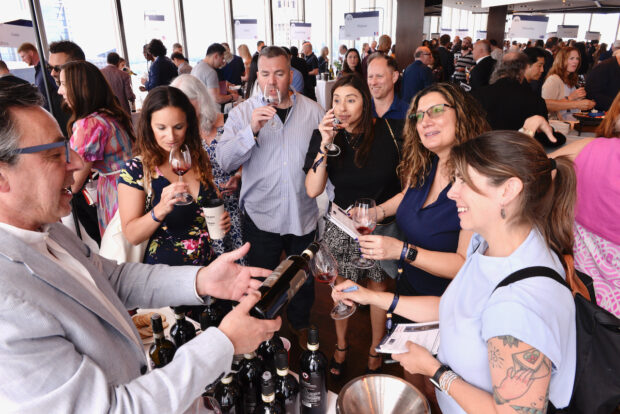What are yeasts
Yeasts are single-cell microorganisms that are responsible for the production of the enzymes that permit fermentation; the conversion of six-carbon sugar molecules into ethyl alcohol and carbon dioxide while releasing heat.
During fermentation, yeasts also produce small amounts of volatile compounds, such as esters, aldehydes and sulphur, which can contribute to the varied aroma and flavour profiles of the finished wine.
In the world of wine, the use of yeast is commonly associated with the species of saccharomyces (‘sugar fungus’) cerevisiae, also known as brewer’s yeast because it is used to make beer and leavening bread.
Cultured vs indigenous yeasts
One of the most controversial subjects in the winemaking realm is whether to use yeasts naturally present in vineyards and wineries (ambient or ‘wild’ yeasts) or those that have been manually cultivated to serve certain winemaking needs.
Traditionally, spontaneous fermentation is a combined effect of a mixture of naturally existing yeasts.
While the indigenous Saccharomyces species is usually found on the surface of grape berries, there are also other (non-Saccharomyces) wild yeasts that are present in the environment.
Although they can also impact on the flavour and quality of the wine, they tend to give way to the brewer’s yeast when the alcohol strength in the must goes significantly higher than 5% abv, or there is sufficient level of sulphur dioxide to restrict their activities.
While there is still debate about the issue, indigenous yeasts are considered by some winemakers as part of the local terroir. They are believed by some to give a more balanced and complex flavour profile to a wine.
Decanter columnist Andrew Jefford previously cited research that found indigenous yeast can not only ‘maximise personality differences, but take each wine to a different resting point in terms of sugar conversion’.
Also read: Yeast – Call Me Dad
However, using naturally existing yeasts always presents the risk of unwanted strains – such as Brettanomyces – causing aromas and flavours that are considered undesirable by some. Equally, wild Saccharomyces yeasts can also be ineffective and unpredictable.
In order to eliminate such risks and ensure a smoother, more controlled fermentation, many modern winemaking operations choose to use one or more pre-selected yeast strains.
In an earlier Decanter article, Benjamin Lewin MW estimated that use of so-called cultured yeast in winemaking ‘ranges from 70%-90%’ worldwide.
These cultivated strains, which were originally isolated from ambient yeasts, can vary widely in their characteristics, including the aromas and flavours they promote (see below), their tolerance to the environment (e.g. sulphur dioxide levels, heat and alcohol levels) and their efficiency in converting sugar to alcohol.
Producers can thus pick-and-choose the most ideal characteristics to make their wines.
Defenders of wild fermentation argue that the use of a single, cultured yeast strain leads to somewhat artificial flavours or a lack of diversity between wines,
However, some winemakers are experimenting with blends of cultured yeasts from the more than 200 strains available in the market.
Yeasts and flavours
Yeasts ‘can colour, shape and mould the entire sensual presence of the wine’, as Jefford puts it.
‘The gooseberry aromas of Sauvignon Blanc, the lychee of Gewürztraminer, the strawberry notes of Pinot Noir – none of these are found in the grapes, but they are released or created by yeast during fermentation,’ according to Benjamin Lewin MW.
Read the full feature: Yeasts – do you know what’s flavouring your wine?
Lewin pointed out that the influence of yeasts is most evident in aromatic wines, because ‘small changes in the concentrations of key components can greatly affect varietal character’.
The banana notes of Beaujolais Nouveau, for instance, are believed to come from the increased formation of isoamyl acetate due to yeast strain 71B. The CY3079 yeast can increase the hazelnut and brioche notes of Chardonnay.
The amount of monoterpenes released by yeasts is also understood to significantly alter the expression of aromatic varieties such as Gewürztraminer and Muscat.
The gooseberry and passion fruit aromas of Sauvignon Blanc can be traced back to elements in the grapes, which are converted into sulphur-containing compounds during fermentation.
Yeasts can continue to contribute to wine flavours even after they are dead.
When left in the wine after fermentation, the dead yeast cells, or lees, start to dissolve due to the enzymes in a process called autolysis.
Also read: What are lees in wine? – Ask Decanter
This process can provide a rounder mouthfeel and richer textures to a linear base wine, while adding brioche and biscuit-like flavours.
Lees aging is widely used in producing some white wines, such as in parts of Burgundy and Muscadet. It is also crucial in making Champagne, as well as ‘traditional method’ sparkling wines more generally.
Reference: The Oxford Companion of Wine







